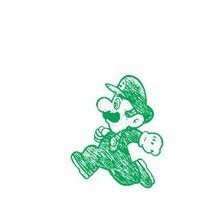前言
覆盖equals方法看起来似乎很简单,但是有许多覆盖方式会导致错误,并且后果非常严重,最容易避免这类问题的办法就是不覆盖equals方法。
什么时候需要覆盖equals方法?如果类具有自己特有的“逻辑相等”概念(不同于对象等同),而且超类还没有覆盖equals方法以实现期望的行为,这时需要覆盖equals方法。
覆盖equals
覆盖equals方法时,必须遵守它的通用约定,如果你违反了它们,就会发现你的程序将表现不正常,甚至奔溃,而且很难找到失败的根源。
通用约定
- 自反性。对于任何非null的引用值x、x,equals(x)必须返回true。
- 对称性。对于任何非null的引用值x、y,当且仅当y.equals(x)返回true时,x.equals(y)必须返回true。
- 传递性。对于任何非null的引用值x、y、z,如果x.equals(y)返回true,并且y.equals(z)返回true,则x.equals(z)必须返回true。
- 一致性。对于任何非null的引用值x、y,只要equals的比较操作在对象中所用的信息没有被修改,多次调用x.equals(y)就会一致地返回true,或者一致地返回false。
- 非空性。对于任何非null的引用值x、x,equals(null),必须返回false。
一般IDE工具,如IntelliJ IDEA可以帮助实现equals方法覆盖。基本上是符合以上约定的。

实现高质量equals方法的诀窍
- 使用==操作符检查“参数是否为这个对象的引用”。
- 使用instanceof操作符检查“参数是否为正确的类型”。
- 把参数转化为正确的类型。
- 对于该类的中每个关键域,检查参数中的域是否与该对象中对应的域想匹配。
示例
public class Point {
private final int x;
private final int y;
public Point(int x, int y) {
this.x = x;
this.y = y;
}
@Override
public boolean equals(Object obj) {
if (this==obj) return true;
if (!(obj instanceof Point)) {
return false;
}
Point p = (Point) obj;
return p.x == x && p.y == y;
}
}
类型检查为什么不用getClass()
getClass测试代替instanceof 测试,只有当对象有相同的实现时,才能使对象等同。此外,使用instanceof 还可以省去对null的判断。
@Override
public boolean equals(Object obj) {
if (this==obj) return true;
if (obj==null || this.getClass()!=obj.getClass()) return false;
Point p = (Point) obj;
return p.x == x && p.y == y;
}
Point1,Point2继承Point。
public static void point1ComparePoint2(){
Point point1=new Point1(1,2);
Point point2=new Point2(1,2);
Point point3=new Point2(1,2);
//不同实现的比较
System.out.println(point1.equals(point2));
System.out.println(point2.equals(point1));
//相同实现的比较
System.out.println(point2.equals(point3));
}
运行结果:false false true
覆盖hashCode方法
重写equals方法必须要重写hashCode方法。如果不这样做的话会违反Object.hashCode的通用约定,从而导致该类无法结合所有基于散列的集合一起正常运作。如HashMap、HashTable、HashSet。
public static void pointListCompare(){
Point point1=new Point(1,2);
Point point2=new Point(1,2);
Map<Point,String> mp=new HashMap<>();
mp.put(point1,"Point1");
System.out.println("point1==point2 "+(point1==point2));
System.out.println("point1 hashCode is:"+(point1.hashCode()));
System.out.println("point2 hashCode is:"+(point1.hashCode()));
System.out.println(mp.containsKey(point1));
System.out.println(mp.containsKey(point2));
}
运行结果:point1==point2 false point1 hashCode is:2133927002 point2 hashCode is:1836019240 true false
Point中添加hashCode()方法
@Override
public int hashCode() {
//31是一个奇素数,有个很好的特性,乘法可以优化为移位和减法:31*i==(i<<5)-i。
// 现在的VM可以自动完成这种优化。习惯上都使用素数来计算散列结果
int result = x;
result = 31 * result + y;
return result;
}
运行结果:point1==point2 false point1 hashCode is:33 point2 hashCode is:33 true true
HaspMap有一项优化,可以将与每个项相关联的散列码缓存起来,如果散列码不匹配,也不必检验对象的等同性。
完美实例
不同类型的覆盖方法和hashCode生成。
public class PerfectEquals {
//基本类型
private int x;
private char c;
private double d;
private float f;
private String name;//引用类型
private Color color;//枚举类型
private Point point;//引用类型
private List<Point> pointList;//集合类
public PerfectEquals(int x, char c, double d, float f, String name, Color color, Point point, List<Point> pointList) {
this.x = x;
this.c = c;
this.d = d;
this.f = f;
this.name = name;
this.color = color;
this.point = point;
this.pointList = pointList;
}
@Override
public boolean equals(Object o) {
//1. 使用==操作符检查“参数是否为这个对象的引用”。
if (this == o) return true;
//2. 使用instanceof操作符检查“参数是否为正确的类型”。
if (!(o instanceof PerfectEquals)) return false;
//3. 把参数转化为正确的类型。
PerfectEquals that = (PerfectEquals) o;
//4. 对于该类的中每个关键域,检查参数中的域是否与该对象中对应的域想匹配。
if (x != that.x) return false;
if (c != that.c) return false;
if (Double.compare(that.d, d) != 0) return false;
if (Float.compare(that.f, f) != 0) return false;
// if (name != null ? !name.equals(that.name) : that.name != null) return false;//10000000 times compare cost time is 27-32ms
if (name!=that.name|| name!=null&&!name.equals(that.name)) return false;//更快些,10000000 times compare cost time is 3-4ms
if (color != that.color) return false;
// if (point != null ? !point.equals(that.point) : that.point != null) return false;
if (point!=that.point||point!=null&&!point.equals(that.point)) return false;
// return pointList != null ? pointList.equals(that.pointList) : that.pointList == null;
return pointList==that.pointList|| pointList!=null&&pointList.equals(that.pointList);
}
@Override
public int hashCode() {
int result;
long temp;
result = x;
//31是一个奇素数,有个很好的特性,乘法可以优化为移位和减法:31*i==(i<<5)-i。
// 现在的VM可以自动完成这种优化。习惯上都使用素数来计算散列结果
result = 31 * result + (int) c;
temp = Double.doubleToLongBits(d);
result = 31 * result + (int) (temp ^ (temp >>> 32));
result = 31 * result + (f != +0.0f ? Float.floatToIntBits(f) : 0);
result = 31 * result + (name != null ? name.hashCode() : 0);
result = 31 * result + (color != null ? color.hashCode() : 0);
result = 31 * result + (point != null ? point.hashCode() : 0);
result = 31 * result + (pointList != null ? pointList.hashCode() : 0);
return result;
}
public static void main(String[] args) {
List<Point> pointList=new ArrayList<>();
Point point1=new Point(1,2);
Point point2=new Point(2,2);
Point point3=new Point(3,2);
pointList.add(point1);
pointList.add(point2);
pointList.add(point3);
PerfectEquals pe1=new PerfectEquals(12,'c',12D,21f,"Perfect",Color.RED,new Point(23,24),pointList);
PerfectEquals pe2=new PerfectEquals(12,'c',12D,21f,"Perfect",Color.RED,new Point(23,24),pointList);
long start=System.currentTimeMillis();
for (int i=0;i<10000000;i++){
pe1.equals(pe2);
}
long end=System.currentTimeMillis();
System.out.println("compare cost time is :"+(end-start));
}






